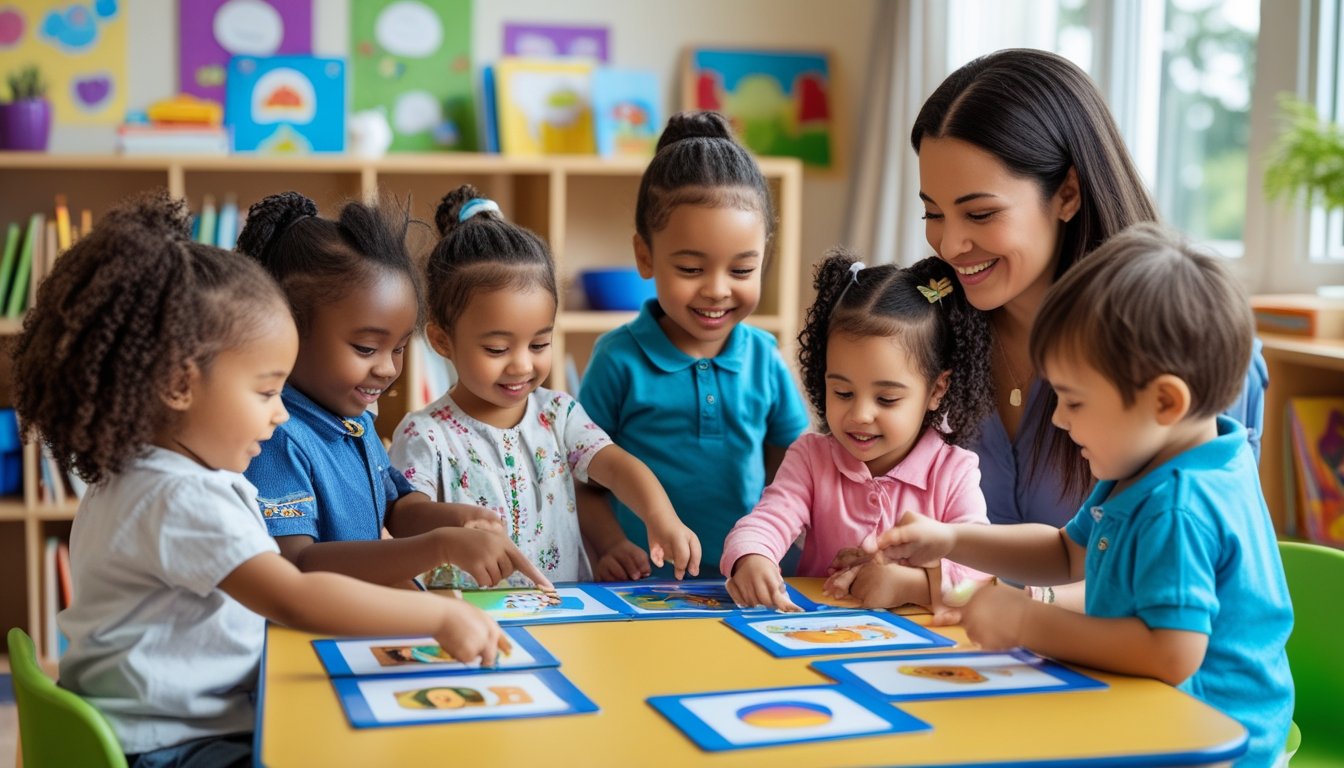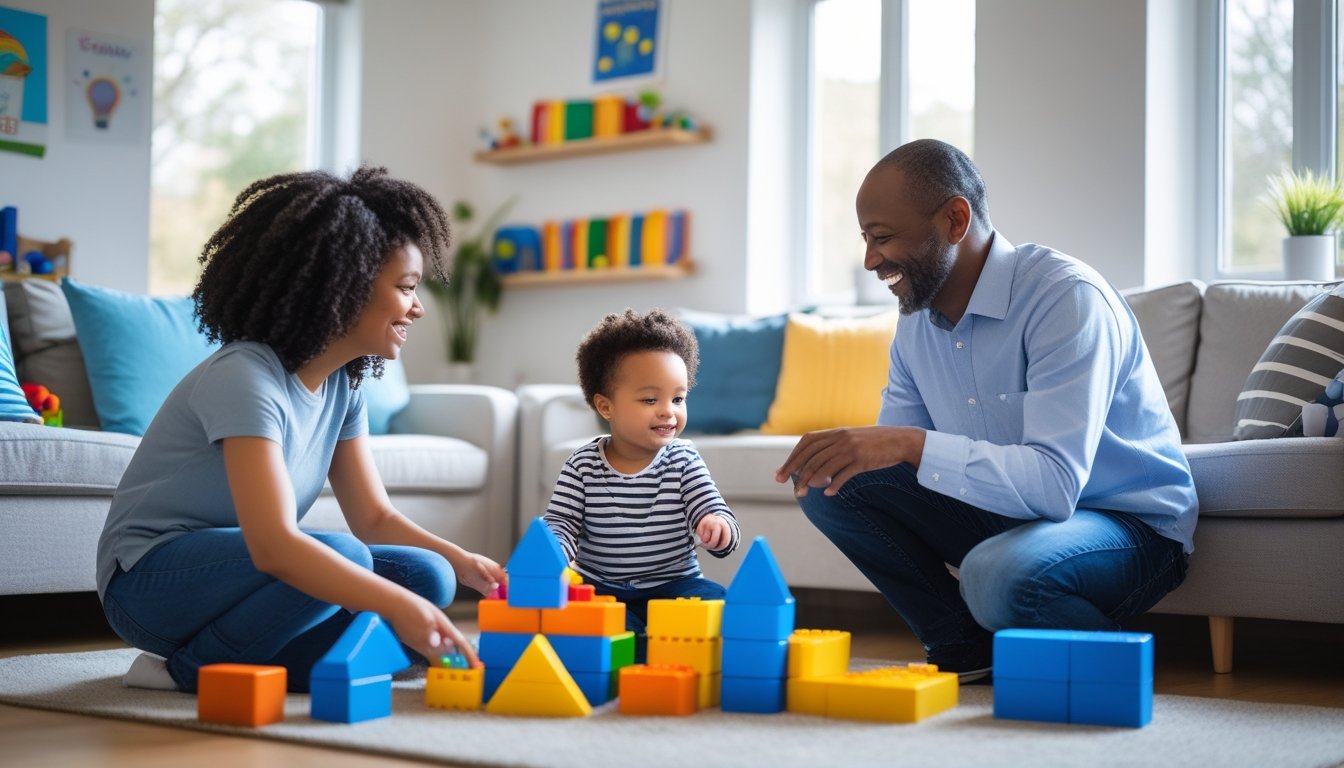Late updated: 30 Oct 2025 12:10
Written by:
Supporting Children's Language Development Through Everyday Conversations: Practical Insights
Everyday conversations with children are not just ordinary interactions; they are powerful tools for language development. As we engage with our children during routine activities, such as mealtime or playtime, we have the opportunity to make these moments rich with language learning potential. Simply talking with our children regularly, without the need for special tools or training, can significantly enhance their language skills.

From the earliest days, children are immersed in a world of words, sounds, and gestures. Our role as parents and caregivers is pivotal in nurturing this natural progression. Engaging in meaningful conversations helps to advance their vocabulary, comprehension, and communication abilities. It’s about being present, tuning in, and making every interaction count.
To help every caregiver, this blog post will explore practical strategies that turn everyday interactions into language-building blocks. We'll discuss how simple routines can be transformed into opportunities for language growth, ensuring our children are equipped with the skills they need to succeed.
Key Takeaways
- Everyday conversations are essential for language development.
- Meaningful interactions bolster vocabulary and comprehension.
- Practical strategies can transform daily routines into learning opportunities.
The Role of Everyday Conversations in Children's Language Development

Everyday conversations play a pivotal role in bolstering children's language development. Through these interactions, children learn essential communication skills such as vocabulary, syntax, and turn-taking, which are vital for effective language use.
Importance of Responsive and Reciprocal Interaction
Interactive dialogues, often referred to as "serve and return," form the backbone of children's language learning. When we engage in these exchanges with children, we're not just communicating; we're helping them build language skills. Engaging in reciprocal interaction encourages them to process and produce language constructively.
During these conversations, children's ability to understand and respond grows. For instance, when we ask questions and patiently await their responses, they learn turn-taking—an essential communication skill. This process is more than just repetition; it's an active learning experience.
Quality and Quantity of Language Input
Both the quality and quantity of language inputs are crucial for language development. It's not only about talking more with children but also about the richness of vocabulary and sentence structure. When we expose children to a diverse range of words and complex syntax, we provide them with the tools to express themselves more effectively.
Reading stories or narrating daily activities offer excellent opportunities to introduce new vocabulary. The more varied the language input, the more children can absorb and reproduce, fostering robust language skills that prove invaluable as they grow.
Age-Appropriate Communication Strategies
Tailoring our communication strategies to match a child's developmental stage is essential for fostering language skills. Infants benefit from simple sentences and lots of repetition. As they grow, we can introduce more complex language structures and vocabulary.
For toddlers and preschoolers, it becomes crucial to model proper syntax and expand on their utterances. For example, if a child says, "car go," we can model by responding, "Yes, the car is going fast." This scaffolding technique not only affirms their effort but also introduces more advanced language structures.
Age-appropriate strategies create a supportive environment that nurtures ongoing language development and helps children navigate different stages effectively.
Practical Strategies and Activities for Supporting Language Development

Effective language development in children can be achieved through engaging day-to-day conversations. Using specific techniques such as asking open-ended questions and incorporating vocabulary learning into daily routines fosters children's expressive and narrative skills.
Using Open-Ended Questions and Expanding Vocabulary
Asking open-ended questions encourages children to think critically and express themselves more fully. Unlike yes-or-no questions, which limit responses, open-ended questions require children to explore and articulate their thoughts. We can use scenarios from books or everyday situations to pose these questions.
Vocabulary expansion happens naturally during these conversations. Introducing new words within context and discussing their meanings enhances children's vocabulary. Repeating these words in different contexts also reinforces comprehension and usage. Interactively reading stories is an excellent way to showcase new words and involve children in meaningful dialogue.
Integrating Language Learning in Daily Routines
Turning daily routines into language-learning opportunities helps reinforce communication skills effortlessly. During meals, bath time, or while getting dressed, we can involve children in conversations that describe activities or actions. This familiarity allows children to associate words with their meanings naturally.
We should emphasise the use of descriptive language throughout the day. Discussing the colours, sizes, and shapes of objects around us creates a rich linguistic environment. Incorporating songs and rhymes during these routines also adds an element of fun while reinforcing language skills.
Encouraging Narrative and Critical Thinking Skills
Storytelling plays a crucial role in boosting a child's narrative skills. By encouraging children to recount events or imaginary tales, we build their ability to structure thoughts cohesively. We can prompt them to describe past activities by asking them to think about what happened first, next, and last.
Critical thinking is similarly fostered through conversations that challenge reasoning. Encouraging children to express opinions about stories or their daily experiences boosts analytical skills. Highlighting different perspectives and solutions during discussions can further stimulate their inquisitiveness and debate abilities.
Frequently Asked Questions

Supporting children's language development through everyday conversations is crucial. Various strategies can be adopted by parents and educators to enhance children's linguistic growth, focusing on practical activities and interactions.
What strategies can parents employ to enhance language development in early childhood?
Parents can foster language development by engaging in regular, meaningful conversations with their children. Asking open-ended questions, encouraging storytelling, and involving them in daily routines can stimulate their language skills. Consistent praise and exposure to diverse vocabulary also play a vital role.
How does the quantity and quality of caregiver speech influence a child's vocabulary growth?
Both the quantity and quality of caregiver speech significantly impact a child's vocabulary. Rich, varied language and frequent interactions help children learn new words and structures. Quality conversations, where caregivers attentively listen and respond, enhance comprehension and expression abilities.
In what ways do reading activities contribute to language acquisition in young children?
Reading activities offer valuable opportunities for language acquisition. Shared reading sessions introduce children to new vocabulary and complex sentence structures, promoting comprehension. Interactive elements, such as discussing storylines and characters, further deepen engagement and understanding, facilitating linguistic development.
What role do social interactions play in the expansion of a child's linguistic abilities?
Social interactions provide essential contexts for language learning. Through play, conversations, and collaborative activities, children develop communicative skills and empathy. Engaging with peers and adults helps refine language use, adjust tone, and expand vocabulary, supporting comprehensive linguistic growth.
How can educators facilitate a language-rich environment in the classroom setting?
Educators can establish a language-rich environment by incorporating various communication activities throughout the day. Storytelling, group discussions, and interactive play encourage verbal expression. Providing access to diverse reading materials and integrating language into all subjects enriches students' exposure to words and ideas.
What are the indicators of a potential language delay, and how should they be addressed?
Signs of a potential language delay include limited vocabulary, difficulty forming sentences, and challenges understanding instructions. Early intervention is essential. Consulting speech therapists and utilising tailored language exercises can address these delays effectively, ensuring children stay on track with their peers.
